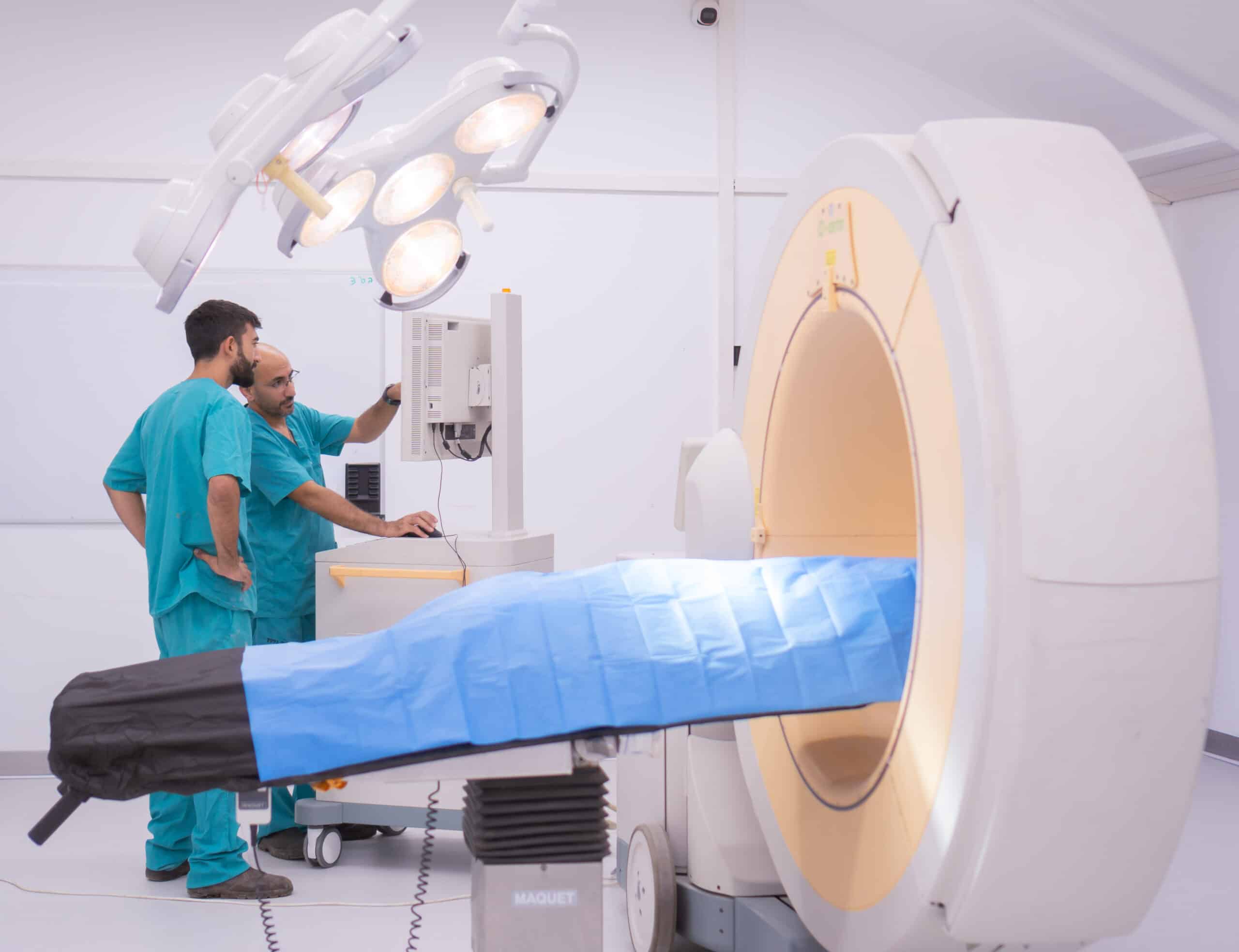Understanding Animal Pharmacokinetics for Human Drug Insights
Understanding the journey of a potential drug within an organism is crucial to developing effective treatments. That’s where pharmacokinetic studies in animals come into play. They bridge the gap between laboratory research and real-world applications, ensuring that when a drug reaches the clinic, it’s both safe and efficacious.
My exploration into these studies reveals their importance in the early stages of drug development. Through rigorous testing in animals, researchers can predict how a drug behaves in humans, from absorption to metabolism and excretion. It’s a fascinating and vital step in bringing new therapies to light.
Importance of Pharmacokinetic Studies in Animals
When we delve into the world of drug development, it’s impossible to overlook the crucial role of pharmacokinetic studies conducted in animals. These studies aren’t just a preliminary step; they’re the backbone of ensuring that a potential drug can be safely and effectively translated from the lab to the clinic. Let me explain why.
Pharmacokinetic (PK) studies in animal models are my go-to before devising a clinical strategy for In Vivo Research. These studies allow me to extrapolate data that can predict how a drug might behave in humans, an absolutely vital piece of the drug development puzzle. Whether it’s absorption, distribution, metabolism, or excretion (ADME), PK studies give me insight into each stage a drug will go through.
For instance, consider LP, an anticancer agent that’s caught the eye of many in the pharmaceutical sphere. Before sending LP through the rigorous path of clinical trials, I need to know everything about its journey in the body. That’s where animal PK studies come in. These were not mere checks in boxes; they were thorough investigations involving different species like rats, tumor-bearing nude mice, and beagle dogs to get a comprehensive understanding of LP’s and its active metabolite L2Z’s pharmacokinetics.
Here’s a glimpse at the kind of data I’m talking about:
| Rats | Nude Mice | Beagle Dogs
|
|
|---|---|---|---|
| LP Studies | Done | Done | Done |
| L2Z Studies | Done | Done | Done |
And there’s more—while assessing LP, the in vitro metabolism and drug-drug interaction potentials were also scrutinized. This extensive data collection underlined the drug’s behavior across various physiological landscapes, something that human trials alone could never fully encapsulate.
Beyond the ADME profile, PK studies serve a deeper purpose. The in vitro data, including the effects on cytochrome P450 enzymes and plasma protein binding, guide me in foreseeing potential interactions and contraindications. The recent approval for LP to continue studies in a phase I clinical trial is a testament to the comprehensive PK profile developed through animal studies, which played a pivotal role in bridging preclinical revelations with patient treatment scenarios.
Absorption Studies in Animals
Understanding the absorption of new chemical entities (NCEs) in animal models is a foundational aspect of pharmacokinetic studies. Absorption is the process by which a drug enters the bloodstream after its administration, and it’s crucial to determine how a drug is taken up by the body. This insight guides the dosage and frequency for potential therapeutics.
In vivo research in animals, like rats, mice, and dogs, enables a detailed observation of drug absorption. we’ve noticed that the route of administration plays a significant role in how a drug is absorbed. Oral, intraperitoneal (IP), subcutaneous (SC), and intravenous (IV) methods are commonly used, with IV administration reserved for rats due to anatomical and physiological considerations.
For instance, oral absorption studies are critical for drugs intended for oral intake. They reveal the drug’s behavior through the gastrointestinal tract. The process can be affected by factors like solubility and the presence of food, which are aspects we’d explore in food effect studies.
The innovative methodologies used in absorption studies have evolved over time. Techniques include single or multiple dosing, which determines the absorption over one or repeated administration, and can include cassette dosing to assess multiple compounds simultaneously. Microsampling techniques collect small volumes of blood, reducing the stress on the animal and enhancing the ethical standing of the studies.
Data on absorption kinetics, such as the time to reach maximum concentration (Cmax) and the minimum concentration (Cmin) in the animal’s system, provide valuable insights. These metrics enable me to accurately predict how a drug will perform in humans.
Dose escalation studies and assessments that consider the gender effect on absorption further refine our understanding of a drug’s in vivo behavior.
The goal is always to gather comprehensive data that informs safe and effective dosing regimens for patients.
Absorption studies in animals are invaluable in painting a complete picture of a drug’s pharmacokinetic profile.
These studies intricately link preclinical findings to clinical expectations. By observing how NCEs behave in animal models, we can make informed predictions about their performance, significantly contributing to the advancement of medical science.
Metabolism Studies in Animals
When diving into the world of pharmacokinetics, understanding how a drug is metabolized within a living organism is imperative. Metabolism studies in animals offer crucial insight into this phase. My extensive research and writing have highlighted that these in vivo studies are vital steps towards ensuring safety and efficacy before a drug makes its debut in a human body.
In our experience, metabolism can significantly alter a drug’s activity, and without comprehensive animal studies, we’re navigating in the dark.
It’s fascinating how different species can metabolize the same drug differently, presenting varied therapeutic and toxicological profiles. That’s why I always note the importance of involving multiple species in metabolism studies. Rodents such as mice and rats are commonly used, but when more complex data is needed, studies extend to non-rodent species like beagle dogs.
Let’s take a closer look at an illustrative case: the anticancer agent LP and its metabolite L2Z.
Detailed studies across rodents and non-rodents provided a wealth of data on its metabolism. Metabolization patterns in animals not only inform us about the potential efficacy but also the safety margins we can expect in humans. Moreover, features like plasma protein binding and the drug’s effect on cytochrome P450 enzymes were meticulously studied—factors that are often pivotal in predicting drug interactions and reactions in humans.
In vivo research in biotech farms, where advanced facilities are utilized, forms the backbone of these metabolism studies. In such controlled environments, I’ve observed precise administration of drugs and meticulous monitoring of metabolic pathways. Researchers pay extra attention to understanding metabolites, their formation rates, and their potential impact. For LP, the metabolism research held the key to progressing to a phase I clinical trial, emphasized by the approval from the China Food and Drug Administration.
Understanding metabolism through in vivo research sheds light on dosage optimization, possible side effects, and interactions with other drugs. It acts as a compass that guides researchers through the pharmaceutical landscape, ensuring the development of drugs that are not just effective but also safe for human consumption. Studies like these represent a huge stride forward in bridging the gap between laboratory findings and real-world applications.
With new drugs continuously entering the market, metabolism studies in animals remain an indispensable segment of pharmacokinetic research, helping us to navigate the complexities of drug behavior in living systems.
Excretion Studies in Animals
In the landscape of drug development, excretion studies in animals play a pivotal role. They give us the full picture of how a drug is eliminated from the body after its pharmacological effects have been exerted. This is crucial to understanding the drug’s safety profile and ensuring it doesn’t accumulate to toxic levels within the body. My research in this field often involves monitoring and analyzing how drugs and their metabolites are excreted via urine, bile, and feces.
During these studies, animal models like rats, which mirror human excretion pathways, are commonly used. They offer valuable insights into the excretion patterns of both the parent drug and its active metabolites. For a thorough excretion assessment, I study both male and female rodents to account for any variances between sexes, which might influence drug elimination.
To illustrate, let’s examine the excretion of a drug, along with its active metabolite, L2Z. They’re propelled through various excretion pathways—renal, hepatic, and more. It’s fascinating to see how the body handles these substances and how they are expelled. I examine the percentage of the drug dose that is recovered from excretory samples in these animal studies. These values are fundamental benchmarks for determining appropriate dosages and frequencies for human application.
In conducting this research, precision is key. That’s why animals are housed in carefully monitored environments, such as Nalgene metabolic cages, designed for accurate collection and measurement of excretory samples. Detailed analysis of these samples lays the foundation for predicting how a drug will behave once it moves to human trials.
At this juncture, understanding the balance of drug absorption, distribution, metabolism, and excretion—collectively referred to as ADMET properties—is vital. We must consider all variables, from enzyme interactions to protein binding, which may sway the drug’s journey through and out of the body. In vivo research provides the critical data needed to calibrate these factors optimally. And while we’ve covered ample ground, the intricacies of drug excretion continue to push the boundaries of what’s possible in animal pharmacokinetic studies.
Understanding Drug Behavior in Humans through Animal Studies
As I delve deeper into the world of pharmacokinetics, it’s become abundantly clear that in vivo research plays an indispensable role in comprehending how drugs behave in humans. Discovering the pathways a drug takes from administration to excretion is no small undertaking, and animal models offer vital clues to these complex processes.
In the realm of biotech and pharmacology, it’s essential to acknowledge that the metabolic and disposition characteristics of drug candidates often require comparison across different species. Animals such as monkeys, dogs, and minipigs provide valuable insights due to their physiological similarities to humans.
Particularly, monkeys have proven to be the closest to humans in terms of genetic homology. This allows researchers to make more accurate predictions about how a drug might interact within the human body. Their use in studies is backed by the necessity to predict the human response with a higher degree of certainty.
Dogs, on the other hand, offer a different set of advantages. They’re not only easy to handle but come with a wealth of comprehensive background data. This knowledge base is critical for toxicological safety assessments, providing a clearer picture of potential human drug reactions.
When drugs are suspected to be metabolized by specific enzymes like AOX1, NAT1, NAT2, or CYP2C9, the choice of animal model becomes even more important. Minipigs have been used to a lesser extent, but they present a promising model for drugs processed by these particular metabolic pathways.
At the forefront of In Vivo Research, it’s important to recognize the challenges facing data presentation and interpretation. Poorly reported findings not only harm reproducibility but also waste precious time and resources. With the aim of overcoming these challenges, the scientific community has introduced guidelines to elevate the reporting standards of animal studies. It’s my belief that strict adherence to these guidelines can significantly improve our understanding of drug kinetics and dynamics, ultimately allowing us to extrapolate findings to human health with greater accuracy.
As we continue to explore the vast landscape of animal pharmacokinetics, it’s this meticulous attention to detail and commitment to standardization that will lead to breakthroughs in how we predict and understand drug behavior in humans. And with each study, we hone our skills, refine our methods, and draw one step closer to ensuring safer, more effective treatments for patients around the globe.
Conclusion
Pharmacokinetic studies in animals are pivotal for the safe and effective development of new drugs. By leveraging animal models, researchers gain essential information that informs human clinical trials and, ultimately, the use of medications in medical practice. Adherence to rigorous reporting standards enhances the value of these studies, ensuring that the data collected can be trusted and utilized to its fullest potential.
As we continue to refine these methods and models, the bridge between animal and human studies will undoubtedly strengthen, leading to breakthroughs in pharmacology and treatment options for patients around the globe.





